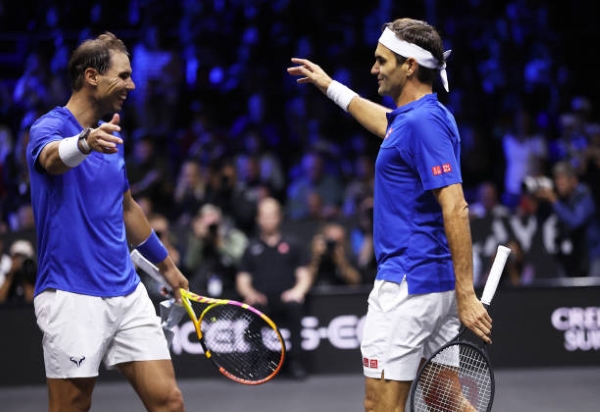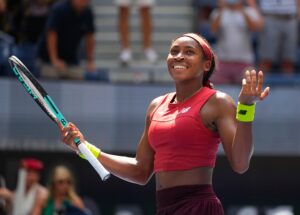Rafael Nadal’s announcement that he will retire from professional tennis after this year’s Davis Cup finals has made it is clear that we are no longer in the twilight of the tennis gods but the dusk. Soon, only Novak Djokovic will remain of the three racket-wielding deities who have elevated the sport to previously unimaginable heights over the last two decades. But what was perhaps most remarkable about all the tributes rightly paid to Nadal after his announcement, especially among those made on social media, was that many of them came from the same tennis fans who had initially resented or even loathed his very presence in the sport – the most devoted Roger Federer fans, or “FedHeds”.
A Brief History of the Federer-Nadal Rivalry: Part 1 – The Classic Clash of Styles
It is extraordinary how interlinked the careers of Federer and Nadal have been, to the point that it is virtually impossible to think of one without the other, or even to the point where they are somehow conflated into one as “Fedal” or “Naderer”. Although Federer is nearly five years older, they emerged as titans of tennis more or less simultaneously, with Nadal defeating Federer in straight sets in their very first match at the Miami Open in 2004, at the precise point that Federer, having won both Wimbledon and the Australian Open in the previous nine months, had begun to look unbeatable.
If that first encounter in Florida did not immediately establish what would become a legendary sporting rivalry, their regular encounters over the next few years did, as did the apparently complete contrast between both their playing styles and their personalities. Put bluntly, it appeared to be a classic clash between grace and grunt, on and off the court, as the more aesthetically pleasing and seemingly more personable Federer faced the more obviously competitive and at the time virtually monosyllabic (especially in English) Nadal.
As Nadal began to dominate on clay, winning his first three French Opens between 2005 and 2007 and beating Federer in the finals of the last two of them, it was the grass of Wimbledon that became their real battle-ground. Everyone who saw it remembers the 2008 Wimbledon final, which remains arguably the greatest tennis match ever played, but it was the culmination of a three-year run of Wimbledon finals in which Federer, like the most fabulously stylish of matadors, somehow resisted Spain’s raging bull until he finally succumbed in the gathering gloom, if not absolute darkness, of the 2008 final.
For Federer fans, of whom there were many millions by that point, it was devastating, not only because Nadal had stopped their favourite from winning a sixth successive Wimbledon, thereby beating the record he shared with Bjorn Borg, but because he had done so in a manner that was so antithetical to Federer’s defining qualities. Whereas Federer seemed to glide across the grass, as if he was not really setting foot upon it at any point, Nadal effectively thundered over it, his awesome, bicep-bulging presence not only palpable but audible.
Part 2 – Gradual Acceptance
Over time, and perhaps especially as Novak Djokovic emerged as the third of the Three Tennis Gods who have dominated the sport in the last 20 years, there was gradual (if occasionally grudging) acceptance of Nadal by Federer fans, and not just of his playing style but of his personality, which was always more introverted than that of Federer.
Perhaps the precise moment at which the thawing between “FedHeds” and “Rafaelites” (the two great tribes of tennis fans, especially before Djokovic gained an increasing number of fans, or “Novakians”) was the instantly famous 2010 photo and video shoot in Switzerland involving the two, which ended with them collapsing in uncontrollable laughter. It seemed to cement a growing bond between the two players, one that neither one never really replicated with Djokovic, and enabled their respective fans to begin to appreciate the particular attributes of the opponent they had previously ignored or refused to accept.
Part 3 – Realisation That Their Rivalry Was Mutually Beneficial
The final stage in the thawing of the cold war between Federer and Nadal fans was the realisation that their rivalry was mutually beneficial, and that was even truer when Djokovic fully asserted himself as their equal and the Federer-Nadal rivalry became The Trivalry, a truly three-headed rivalry that became not just the greatest in tennis history but arguably the greatest in the history of all sport.
The only comparable trivalries in any sport were in heavyweight boxing in the 1970s, when Muhammad Ali, Joe Frazier and George Forman fought out a succession of virtually globe-stopping battles against each other, and in golf in the 1960s, when Arnold Palmer, Jack Nicklaus and Gary Player were regularly contesting Major championships. But those two other trivalries were relatively short-lived, certainly in comparison with the enduring – indeed, two decades long – nature of The Trivalry in tennis.
Ultimately, all three players and their respective armies of fans came to realise that the unprecedented nature of their three-sided rivalry meant that they all had to raise their game collectively, to the extent that they virtually locked down all the men’s Majors for nearly twenty years, with only Andy Murray and (briefly) Stan Wawrinka emerging as genuine competitors with them all.
Ultimately, It Is The Rivalry That Matters, Not The Rivals
The history of, first, the Federer-Nadal rivalry and then the Trivalry between Federer, Nadal and Djokovic teaches us all a fundamental truth about sporting rivalry and perhaps even about human interdependence more widely. Put simply, if only one of Federer, Nadal and Djokovic had emerged in the last 20 years and been utterly all-conquering, then it is extremely unlikely that that one player would ever have reached the heights that they all did collectively.
The obvious comparison in tennis is with Pete Sampras in the 1990s, especially at Wimbledon. Sampras completely dominated the great grass-court tournament in that decade, winning it seven times and losing only one match (to eventual winner Richard Krajicek in 1996) between 1992 and 2000. But precisely because he was so dominant at that time and on that surface, Sampras never really generated the kind of global adoration and acclaim that Federer, Nadal and Djokovic have all enjoyed over the last 20 years.
In sport in general and perhaps in tennis in particular, ultimately it is the rivalry that matters and not the rivals themselves. The greatest rivalries – Borg-McEnroe in the early 1980s, The Trivalry of the last 20 years and perhaps Alcaraz-Sinner in the future – bring the very best, indeed a previously unimagined best, out of both parties (or all three in the case of The Trivalry). And in the end that is why, having initially objected to the arrival of Nadal to challenge their adored king, even Federer fans or “FedHeds” were so happy to pay homage to him when he announced his retirement.






